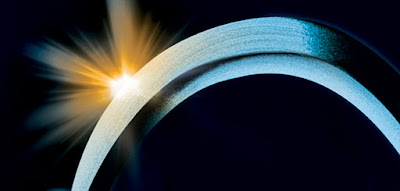No - Review by Stu Coote
In 1988, Chilean dictator Augusto
Pinochet bowed to international pressure and consented to a referendum, asking
Chile whether his rule should be extended for a further eight years. The referendum was simply yes or no, and took
place after just 27 days of campaigning, with each side presenting a nightly
15-minute televised address. No, the
latest film by Pablo Larrain, follows the campaign of the anti-Pinochet camp,
headed by Rene Saavedra (Gael Garcia Bernal), an advertising executive who has
just returned home from the United States. For me, the joy of cinema is
discovering stories like this, which put historical events in a human
perspective in a way that might never otherwise have been appreciated.
Be warned that this film does contain
some very confronting images, not least of which are the 80s fashion and
hairstyles. Like Argo last year, No doesn’t hold back when it comes to
handlebar moustaches, perms and knitted jumpers in flamboyant colours. Now if
pastels and corduroy ain’t your bag, I suggest you keep on walking. For
everyone else, settle in for a disturbing waltz down memory lane. Such was the
skill in recreating the late 80s that you could be forgiven for thinking it was
made in the era.
Unfortunately, in trying to maintain
an 80s aesthetic, the film sacrifices some of its emotional impact. The film is
shot almost entirely like a documentary, where the camera is predominately handheld
and the picture quality is intentionally poor, sometimes looking like a VHS
tape recording that has been converted to film – think Blair Witch Project without the crying and running around. Horror
and action films both employ the technique because it lends more reality to the
scene. The Bourne Identity is a
perfect example of this; during the combat scenes handheld cameras are used in
order to show the speed and brutality of the fights. However, this technique bothered
me in No because the film never suggested a reason for being shot this way. For
the entire film, I felt aware of the off-screen cameraman, who was necessarily
filming the actors within a metre or two of their physical space. Perhaps this
could have been remedied simply by introducing the filmmakers into the story,
as actual characters who wanted to follow the campaign. Then, perhaps, they
style would have been easier to accept.
The documentary-style shooting also
affected the tension of the film. On several occasions, the anti-Pinochet
campaigners were being followed by shadowy military and police figures. But
again, because the camera only allowed a few moments of engagement, it didn’t
convey the fear and anxiety that the actors were attempting to exude. I admire
tense political dramas such as All the
Presidents Men, The Lives of Others and Secrets
in Their Eyes because they know how to ratchet up the stakes for the
characters as they near their dramatic climaxes. By mere virtue of the camera
technique, the shots can afford to be more patient.
 That being said, I can overlook these
issues because the story is entirely compelling and, to the filmmakers’ credit,
uses an incredible amount of stock footage, which helped demonstrate just how cruel
things were under the latter years of Pinochet’s rule. Perhaps a better policy
here would have been to cut from these shots to regular cinematic sequences rather
than trying to mimic them with clunky handheld filming.
That being said, I can overlook these
issues because the story is entirely compelling and, to the filmmakers’ credit,
uses an incredible amount of stock footage, which helped demonstrate just how cruel
things were under the latter years of Pinochet’s rule. Perhaps a better policy
here would have been to cut from these shots to regular cinematic sequences rather
than trying to mimic them with clunky handheld filming.
I know I’m coming across as though I didn’t
like the film. Let me assure you it is a must see and no surprise that it was
nominated for best foreign film at the Academy Awards this year.






Comments
Post a Comment
Thanks for taking the time to read and comment! Bill Murray says: YOU'RE AWESOME!